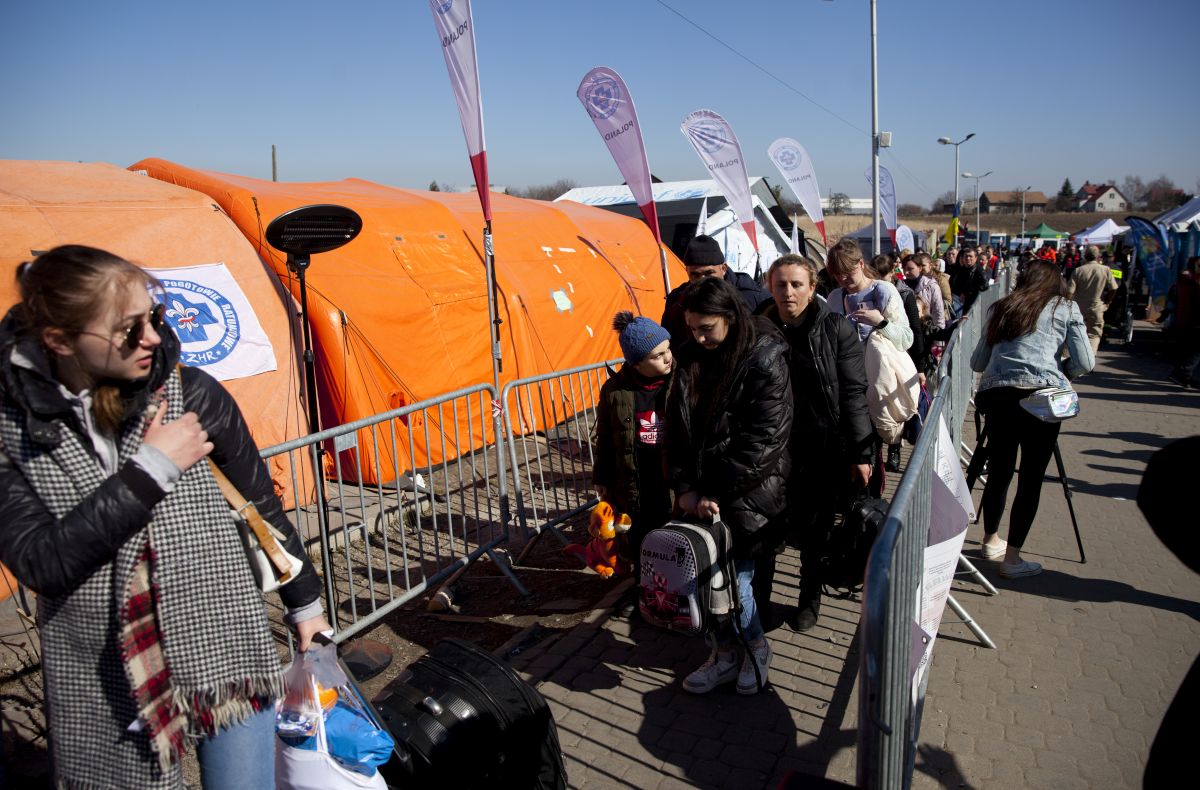EU Weighs Lessons of the Temporary Protection Directive for the Future of Asylum Policy
In response to the mass of refugees following the Russian full-scale invasion of Ukraine, the EU activated a 2001 directive to grant refugees from the latter country temporary protection on the territory of the Member States. The use of this instrument has provided an impetus for the bottom-up relocation of refugees within the EU and accelerated the delivery of assistance, avoiding overloading national asylum systems. Although the positive experiences with the application of the directive will be important for further work on the reform of the EU asylum system, it will not become the basis of a new solidarity mechanism in a crisis.
 Adam Chelstowski/ Forum/ FORUM
Adam Chelstowski/ Forum/ FORUM
The EU Council directive on minimum standards for granting temporary protection in the event of a mass influx of displaced persons was adopted in the EU on 20 July 2001 in connection with the conflict in the former Yugoslavia. Until Russia’s armed invasion of Ukraine, the directive had not been applied in practice. On 2 March 2022, the European Commission (EC) proposed to launch it. Two days later, the Council unanimously adopted an executive decision declaring the existence of a massive influx of displaced persons from Ukraine and the introduction of temporary protection.
Temporary Protection Directive
The directive allows immediate temporary protection to be given to a large group of displaced persons from third countries (collective protection). It can be used when there are reasonable grounds to believe that Member States’ asylum systems will not be able to handle asylum applications without adversely affecting their operations and to the detriment of those seeking protection. The protection provided by the directive allows beneficiaries access to the labour market and vocational training, housing, and other benefits in the host countries, including access to education for children and young people on the same terms as nationals, and access to (at least) basic healthcare and social welfare. It is granted for a period of up to one year, with the possibility of extension to three years. The directive also lays down criteria for family reunification when one or more relatives are in temporary protection and others are not.
The Directive in Practice
The Implementing Decision of 4 March 2022 set out how the Member States are to apply the Temporary Protection Directive. First of all, it was indicated that it applies to displaced persons who had to leave Ukraine from 24 February this year. It applies to both Ukrainian citizens and stateless persons and third-country nationals who have benefited from international or national protection in Ukraine, as well as their family members. At the same time, Member States have the option of extending both the group of persons protected under the directive and the scope of the rights and benefits offered to them. Many took advantage of this possibility, for example, Germany extended the application of temporary protection to Ukrainian citizens who lived in that country before the invasion and cannot renew their residence permit because they no longer meet the relevant criteria, and Slovenia, Luxembourg, and Portugal have allowed the application of the directive to third-country nationals holding a short-term residence permit in Ukraine who cannot return to their countries of origin.
The activation of the directive was a signal to the refugees from Ukraine that they were welcome on the territory of the entire community. To facilitate their movement, many transport companies established additional connections and offered free transport. On the basis of the Council decision of 4 March, the Commission was required to coordinate cooperation and exchange of information between EU countries to monitor their capacity to receive refugees and to identify the need for additional support in implementing the directive. To this end, it established a Solidarity Platform through which countries offer refugee places available on their territory. As part of the platform and in cooperation with UN High Commission for Refugees (UNHCR), the International Organization for Migration (IOM), and the Moldovan government, some of the refugees who originally arrived in that country were transferred to the EU, including to Austria, Spain, Lithuania, Latvia, and Germany.
According to data from the European Asylum Agency, from the beginning of the Russian invasion of Ukraine until mid-August this year, just over 4 million people have obtained temporary protection in the Member States under the Temporary Protection Directive. In the same period, only 24,000 people applied for asylum. The data clearly confirm the attractiveness of the registration procedure and the status obtained under the Temporary Protection Directive compared to the traditional asylum procedure. Refugees from Ukraine who use the simplified registration procedure quickly find employment in the Member States. For example, from the beginning of the invasion to the end of July, nearly 380,000 refugees found employment in Poland.
The Directive’s Potential
The activation of the directive after the Russian invasion of Ukraine opened discussions about its possible application in the future to other refugee crises. Granting refugees from Ukraine temporary protection has resulted in accusations of discrimination against refugees from other conflict places and the application of double standards in the European asylum policy. Moreover, wider opening of European labour markets to refugees is seen not only as a way to integrate them but also as an opportunity to face the challenges of the demographic crisis, the effects of which are already visible on the labour markets of many Member States.
Undoubtedly, it was easier for EU countries to decide to launch the Temporary Protection Directive in the face of the arrival of refugees from Ukraine than during other crises in the past. The existing visa-free travel between the EU and Ukraine was of key importance in this context. Citizens of this country with a biometric passport could move freely within the territory of the EU for up to 90 days. Thus, after the Russian invasion, they could also apply for asylum in any EU country (after reaching its territory), so the responsibility for examining applications was not almost exclusively in the hands of the frontline states, unlike the Syrian refugees in 2015, when the traditional procedure based on the Dublin Regulation was applied. From the perspective of the Member States, therefore, the advantage of applying the Temporary Protection Directive in this case was, first of all, the speeding up of the procedure for granting protection. However, the rules for determining which EU country is responsible for granting it have not changed.
The positive perception of refugees from Ukraine in European societies also helped in making the decision to open the borders. In the Eurobarometer survey from April this year on the EU response to the Russian aggression against Ukraine, up to 88% of Europeans expressed support for accepting refugees in the EU Member States. These figures contrast with the 2015-2016 surveys on the perception of migrants in Europe during that crisis. For example, in a Pew Research Center study from spring 2016, most Europeans perceived migrants from Syria and Iraq as the main threat to the security of their countries (this was, among others, a result of securitisation of migration from the Middle East by politicians).
Conclusions and Perspectives
The launch of the Temporary Protection Directive is a manifestation of the EU’s commitment to the Ukrainian issue but also of the organisation’s ability to develop an effective system, supporting solidarity between states and guaranteeing immediate assistance to refugees in the crisis. Providing quick access to rights under the directive, including access to the labour market, increases the independence of refugees. Lengthy traditional asylum procedures, in turn, put a strain on Member States’ asylum systems, and delays in processing applications undermine public confidence in these systems, making it difficult to find alternative solutions for people who do not need international protection.
The positive effects of the application of the directive during the current crisis will most likely not change the scepticism of the Member States towards an open-door policy for refugees. The Temporary Protection Directive will therefore not provide the basis for a new permanent solidarity mechanism in asylum policy in the short term. However, the experience of its implementation may be used to reform national asylum systems (e.g., expanding access to labour markets of persons applying for protection) and positively influence the further development of cooperation between states in the spirit of solidarity (e.g., with the use of the Solidarity Platform).





